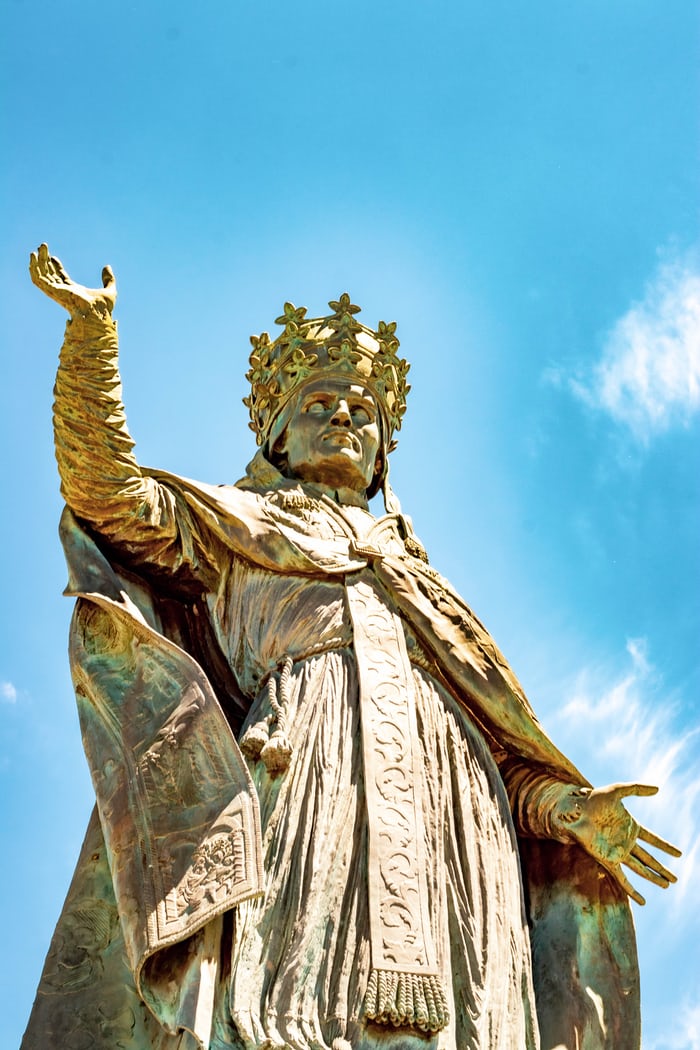Catholic facts
How Catholic Pope is buried
Death is inevitable, its a price everyone must pay whether big or small. This content, contains what happens when the Pope dies and how he’s buried.
When the Pope passes away, the Pope’s Camerlengo or Chamberlain (the Vatican secretary of state) tries to revive the Pope and to confirm his death by calling the Pope name three times. While waiting for the Pope response, he will use a dedicated silver hammer to strike the Pope forehead. If the Pope doesn’t reply, then the Chamberlain declares him dead. Recently, medical doctors also examines the Pope to ensure he’s truly dead and the striking of hammer on the forehead is no longer practiced.
When the Pope is dead, the Chamberlain authorizes the Pope death certificate, he removes the fisherman’s ring from the Pope which the Pope use to seal and stamp document. The fisherman ring has been worn by Popes for 800years, it contains image of Peter fishing in a boat encircled by the name of the Pope. He crushes the ring with a hammer in front of the Cardinals and seals the Papal room with a wax seal. This is to prevent forging of documents claiming to be approved by the late Pope and to prevent the Papal room from being looted.
Outside the Papal room, the gate that leads to St Peter Basilica is closed and the flags are lowered to half mast.
The Chamberlain now assumes the Papacy authority till a new Pope is elected. He also organizes the election of the new Pope. He summons all the cardinals of the world to Rome for a new Pope to be elected.
How the Pope is buried.
The Popes body is treated and clothed with Papal vestments and lies in repose for 9 consecutive days at St Peters Basilica this is called “novemdiales“. During the 9 days, the cardinals performs the funeral rites including daily mass for the late Pope. No one is permitted to video or photograph the Pope while sick or dead unless for documentary purpose and it must happen when he’s on his Papal attire.
While lying in state, the Vatican gives the people around the world opportunity to view the body and pay their last respect to the late Pope.
The Pope must be buried within the 4th-6th day after his death.
In the first three to five days, the body of the Pope is kept inside the Clementine chapel inside the St Peter’s Basilica for people to view.
On the 4th-6th days, the Papal funeral takes place at the main altar or outside the St Peter’s square. Before the mass, the Popes body is placed inside three consecutive coffins. Cypress coffin, Lead (zinc) coffin and Elm coffin.
The first coffin is the Cypress coffin which is the innermost coffin. It symbolizes that the Pope is an ordinary man just like everyone else. Inside the coffin along with the Popes body is a bag of Gold, silver and copper coins. The number of coins in each bag, equals the number of years he was a Pope. The cypress coffin is wrapped and sealed with three silk ribbon before being placed inside the Lead coffin.
The next coffin is the lead coffin. when the cypress coffin is placed inside it, it is soldered shut. The lead coffin has a Cross, the Popes name and his years of papacy engraved on it.
The last is the Elm (oak) coffin which represents the dignity of the Pope. The lead coffin which contains the cypress coffin is placed inside the Elm coffin. This coffin is nailed shut using gold nails.
A Pope can specify where he wants to be buried when he dies but normally Popes are buried under the main altar of St Peter’s Basilica beside St Peter’s tomb.
After the funeral, the pallbearers carries the coffin through the Basilica door of death. The bell is rung once to mark the beginning of the burial.
The coffin is lowered into the marble sarcophagus and a big stone slab is used to cover it.
The process of the burial varies from each Pope. Some Pope were buried in other cities, while some prefer to be buried beneath the soil instead of above ground tomb. St Peters Basilica contains more of Papal tombs than any other place in the world. The grave is adorned according to the wish of the late Popes.
About Author
























